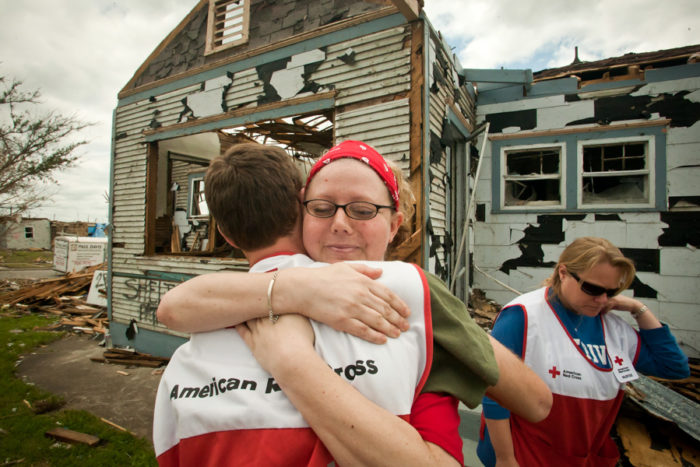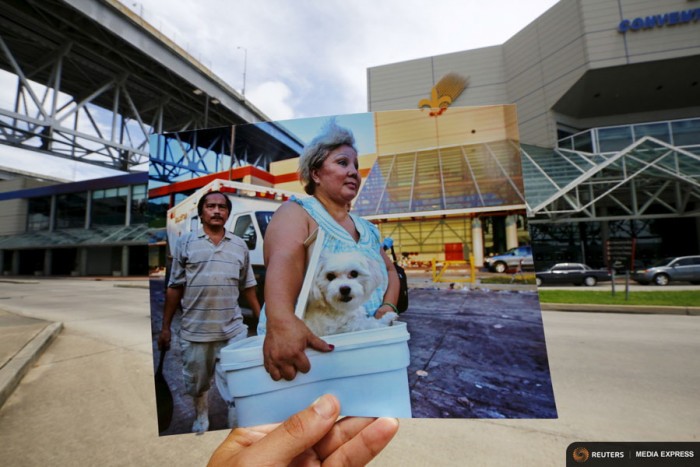
Summer is arriving early to the Pacific Northwest again this year, and it’s time to prepare for the hazards that climate change is bringing to our region.
According to Washington’s Integrated Climate Response Strategy (ICRS), we all need to be ready for the impact of severe weather events due to climate change. This means increased frequency and severity in heat waves, drought, and wildfires.
But it also means some intense indirect effects on public health, according to the ICRS:
“Extreme weather events (also) result in more short- and long-term emotional trauma and mental health problems, including: post-traumatic stress disorder, depression, sleep difficulties, social avoidance, drug or alcohol abuse.”
But we’re not all at equal risk when it comes to these effects. It’s is well established by global experts in disaster management that the vulnerability of people during and after disasters actually varies based on class, ethnicity, gender, disability, and age.
And there’s a devastating amount of research revealing that disasters reinforce, perpetuate and increase gender inequality, making bad situations worse for women.
Gender influences who is vulnerable to which impacts of a natural disaster.
Look at what happened in Hurricane Katrina: Eighty percent of those left behind during evacuations were women. Half of those killed were over 75 — most of whom were women, because women have longer lifespans. Women lacked mobility and bore the brunt of the caregiving for children and elderly during and after the hurricane.
After they were hit by one of the deadliest tornadoes in U.S. history in 2011, the residents of Joplin, Missouri, learned first hand that natural disasters beget personal crises. The community reeled as domestic violence cases increased by 40% and the demand for beds in women’s shelters doubled.
The Federal Emergency and Management Agency (FEMA) provided nearly $4.5 million USD in post-disaster support for mental health services in Joplin, yet women continued to bear the brunt of the tornado’s lasting impact. They suffered physical abuse, lost jobs and homes, and ultimately many were left without the mobility and resources they need to land on their feet.
Disasters increase the demand for women’s shelters, not just because women’s homes are ruined, but because of domestic violence. This won’t come as a surprise to those working in women’s services — domestic violence is already a root cause of homelessness in women.
And even when women report violence, emergency personnel and counselors have been known to encourage them to stay with their partners for a variety of reasons — maybe their partners were heroes in the disaster, or there is no history of abuse in the relationship. Or maybe it’s easier to explain it away because of the intense emotional stress caused by the disaster.
This trend happens again and again in climate related disasters around the world, from New Zealand to India to America. Dr. Elaine Enarson, the leading expert in gender and disasters in the U.S., has long been advocating for a gendered perspective and the inclusion of women’s services in emergency management because of the evidence that violence against women spikes in relation to cold snaps, earthquakes, wildfires,
Pregnant women and their children are particularly vulnerable. Pregnancy is already the most dangerous time in a woman’s life — homicide by partners is a leading cause of death for pregnant women in the U.S.

We can’t pretend anymore that different genders are being treated equally by society. They’re not. We must apply a nuanced gender equity analysis to the emergency planning in our State.
Washington is certainly trying to look at equity and vulnerability — we can see evidence of the equity approach used in the ICRS and in King County’s Strategic Climate Action Plan. The planned response to severe weather events is to “develop transportation options and evacuation routes to ensure safety of vulnerable people.”
But when the State defines vulnerability, the focus is on income, race, and those who speak English as a second language. Of course, these are crucial vulnerabilities in disaster management. But it’s not enough.
A vulnerability assessment should intersect race and gender so we can better understand the needs of each demographic, so we can better understand who is vulnerable to what, and so we can provide women evacuation plans and safe spaces. Women deserve to live free from abuse every day, disaster or no disaster.
If we don’t identify and meet the needs of women in disasters, we might see increased homelessness of women fleeing violence. While women’s services and shelters can be prepared for that, we can do better. We can be more proactive and prevent violence instead of just prepare for it.
Women need to be engaged in decision-making on emergency response planning. How will our disaster management funds be allocated? How will resources be mobilized and prioritized during an after a disaster? Will any efforts be made to prevent domestic violence?
Organizations and agencies that work to meet women’s needs must be at the table when climate action priorities are set, when money is allocated, and when emergency response plans are developed.
Disasters are inevitable. Gender-based violence is not.


I first met Barbara Clabots in the back blocks of The Philippines while she was conducting critical research into the gender disparity of commercial fishing that dis-empowered Filipino women from gaining a reasonable income.
Now, several years on, Barbara is investigating those who have climatic problems and the subtle, or not so, of physical and financial dis-empowerment that leads to family breakdown.
Barbara’s optimism on life and her investigative mind and professional perspective always brings a reader to an informed place. I follow her work with interest.